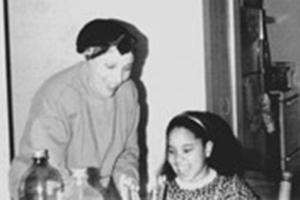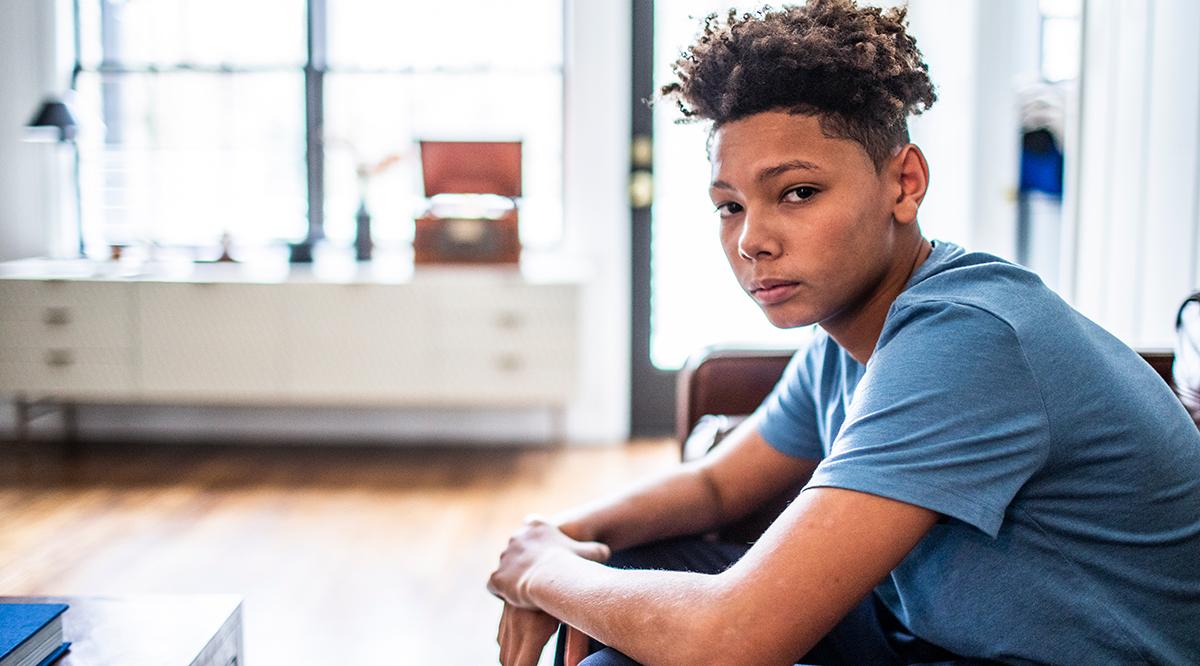Editor’s note: The opinions expressed by the author do not necessarily reflect the opinions of the AAMC or its members.
When I was 14, my mother passed away after a long battle with breast cancer that had metastasized to the bone. My mother was my best friend, and losing her at this young age was devastating. In addition to the personal loss, almost everything in my world changed. I moved in with my grandmother while my brother moved to North Carolina to live with our father.
I increasingly felt lonely and hopeless. I fell deeper and deeper into depression, spiraling into a dark, dark place. I began to suffer from suicidal thoughts.
Thankfully, my grandmother noticed the changes. Thinking it would be easier for me to talk with someone closer to my age, she asked my 21-year-old cousin to check on me. My cousin said that though she and my grandmother couldn’t understand exactly how I was feeling, they wanted to help. Her compassion helped me feel safe enough to share that I was experiencing suicidal thoughts. A wise woman, my grandmother called my pediatrician to get a referral for a therapist.

I remember that during my first two therapy sessions, all I did was cry. The therapist simply assured me it was OK to feel the way I was feeling. During our sessions, I learned skills to help with my dark moments, skills that were vital as the dark moments did not disappear for some time. I still use these skills to this day to help navigate life’s challenges.
I am so grateful that my grandmother and cousin intervened. I am here today because they saw that I was struggling and acted immediately. Unfortunately, this is not always the case for the many Black youth whose lives are lost to suicide every single day.
As a researcher focused on Black youth suicide and a person who identifies as biracial, my heart hurts knowing that so many Black youth are dying from a preventable cause.
Suicide rates among Black youth in the United States are growing at an alarming rate. From 2018 to 2021, the racial group that saw the largest increase in suicides among people 10-24 years old was Black individuals, with an increase of 37%. From 2000 to 2020, Black youth ages 10-19 also experienced the largest increase in suicide rates, a shocking 78%. And in a research study among the youngest children — ages 5-12 — Black youth were approximately two times more likely to die by suicide than their White counterparts. Black students also had a higher rate of suicide attempts when compared to their White and Hispanic counterparts. In other worrisome trends, suicide rates are also growing among other children of color, as well as among youth who identify as LGBTQ+.
As a researcher focused on Black youth suicide and a person who identifies as biracial, my heart hurts knowing that so many Black youth are dying from a preventable cause and that little is known about how to help stop these trends from escalating.
One factor that has been shown to be related to youth suicide is adverse childhood experiences (ACEs) such as domestic violence, financial hardship, or losing a parent. Unfortunately, Black youth are more likely than their counterparts to be overrepresented in environments where ACEs occur, including (but not limited to) low-income neighborhoods and the foster care system.
Youth of color also bear the tremendous burdens of racial discrimination, which is associated with suicidal behaviors. Studies suggest that feeling discriminated against can occur as young as six years of age for Black youth, and Black adolescents who perceive racial discrimination are more than three times more likely to experience suicidal thoughts, make suicide plans, and attempt suicide than those who do not.
What’s more, experiences of racism in the medical system often contribute to Black families’ unwillingness to seek treatment for mental health conditions that can lead to suicidal behaviors. In addition, implicit biases can lead to the misclassification of mental health concerns experienced by Black children. For example, Black youth are sometimes assessed as having a behavioral problem, rather than having a mental health concern.
It will not be easy to reduce the rates of Black youth suicide. What has been done thus far is not working, and we now need everyone vested in the problem to come to the table. Researchers, clinicians, policymakers, community leaders — and Black youth themselves — need to address the problem together.
We need more research into possible causes of suicidal behaviors among Black youth. We also need this research to be informed by community leaders and Black youth themselves since they best understand which questions researchers need to ask and how. It’s important that we test current theories of suicide to determine whether they apply to Black youth or instead need to be adjusted in some way — or even changed completely.
In addition, we need to research and implement more and better suicide prevention programming for Black youth. Implementation scientists, clinicians, and school personnel can help as we work to strengthen the protective factors that are particular to this population. For example, my colleagues and I recently found that nearly 40% of Black youth had a relationship crisis with a boyfriend or girlfriend, family member, or friend before their suicide death, and 30% had an argument within 24 hours of their death. Providing conflict resolution tools to work through relationship crises could be one way to help lower suicide risk among Black youth.
Finally, we need to address our mental health professional workforce, including the insufficient number of individuals of color available to provide care. For example, 86% of U.S. psychologists are White. One way to diversify the workforce is to implement initiatives in middle and high schools that promote mental health professions to students, getting them excited about pursuing such careers and showing them how to do so.
For mental health providers in training and those already in practice, we need education in cultural humility and structural competency so they can better understand the many factors that fuel suicidal behaviors and point to suicide risk in Black youth. For instance, one factor associated with Black youth suicidal behaviors is attention-deficit hyperactivity disorder (ADHD). If mental health professionals focus solely on depression or anxiety disorders as risk factors, they may overlook Black youth at high risk for suicide due to other risks such as ADHD and ACEs.
All these steps are necessary if we are going to help the many youth of color who feel their lives are not worth living.
When in the dark space where suicidal thoughts emerge, loneliness and hopelessness can seem unbearable. I know too well how that feels, but the therapy I received and my loving family members helped me see another way.
I miss my mother and will do so every single day for the rest of my life. Still, I am comforted that my mother would be proud of the work I do that focuses on helping others. I am determined to ensure that young people of color know it is possible to get through their lowest valleys and toughest hours. It will be hard work, but worth every single step taken.

